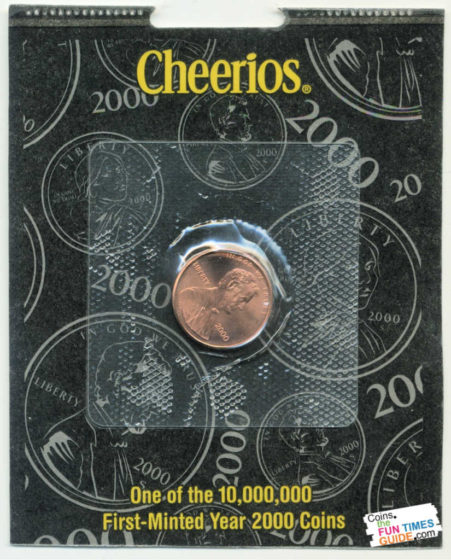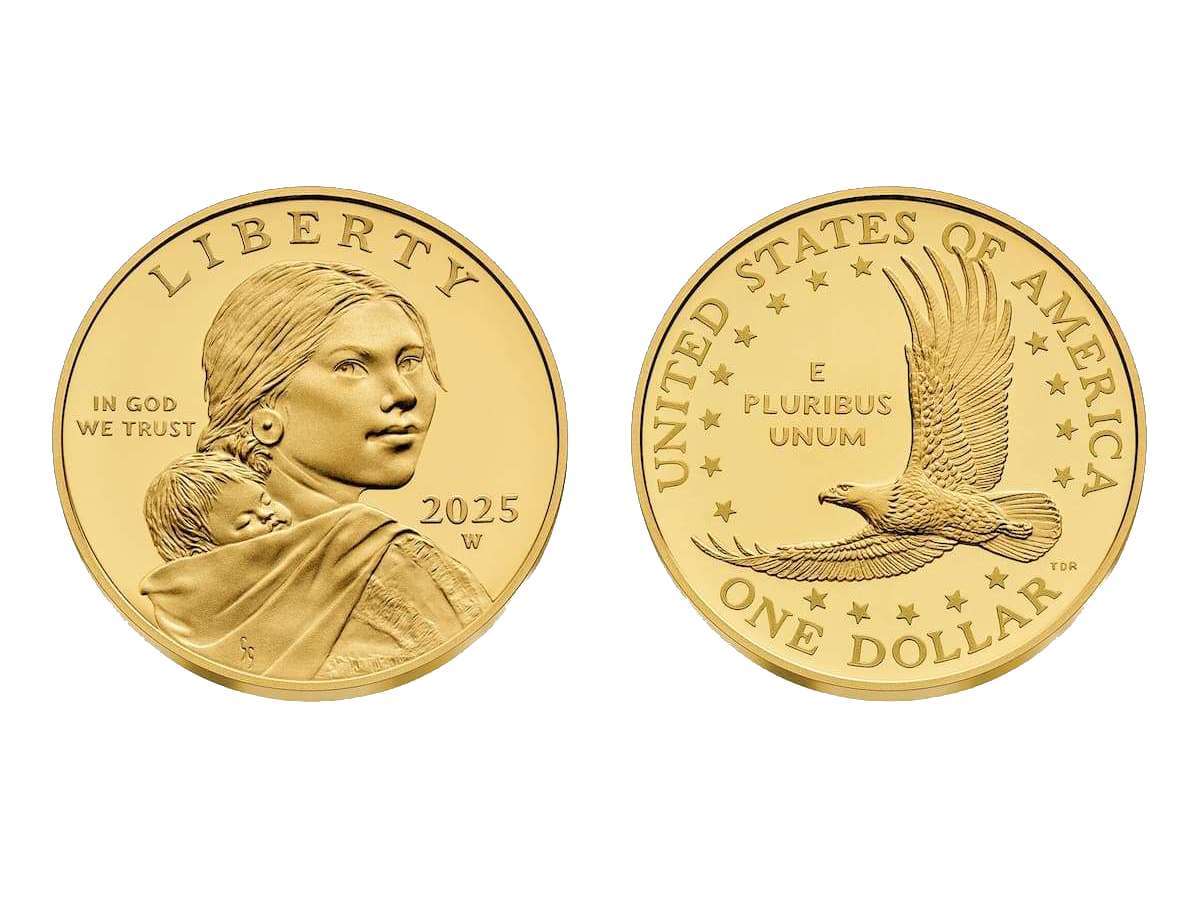Do you have a Cheerios penny?
These special 2000-dated Lincoln pennies were mounted on colorful cards and included in 10 million boxes of Cheerios cereal.
They were distributed in early 2000 and could be found for free inside the Cheerios box.
It was part of a big celebration to help kick off the new millennium and was also a cross-promotion to market the new Sacagawea “golden dollar.” A total of 5,500 of these special 2000 Sacagawea Cheerios dollars were struck and included on a special card — alongside a 2000 Cheerios penny.
This 2-coin set was found in one in every 2,000 boxes of the popular oat-based General Mills breakfast cereal.
More recently, collectors discovered that many, if not most, of the 2000 Cheerios dollars were made with a distinctive reverse die not used to make the vast majority of 2000-dated dollars. These Cheerios dollars bearing the special reverse (tail’s side) constitute a pattern coin and are quite rare and valuable!
Cheerios Penny Facts & Values
All 10 million Cheerios pennies were struck at the Philadelphia Mint — which didn’t stamp a “P” mintmark on its Lincoln cents at the time. So all of these special 2000 Lincoln cents have no markings under the date.
Similar to the 2000 Sacagawea Cheerios dollar, collectors found that some of the 2000 Lincoln pennies included in the promotional giveaway bear a special reverse.
In this case, many of the Cheerios pennies feature a so-called “Wide AM” reverse.
Special 2000 Wide AM Penny Value
Flip over a 2000 Lincoln Memorial cent and look at the base of the letters “A” and “M” in “AMERICA” — which is seen in the inscription “UNITED STATES OF AMERICA” along the upper rim of the reverse.
On most 2000 pennies, the bases of the “A” and “M” are really close together — nearly touching each other.
However, on a number of Cheerios pennies, the “A” and “M” appear much farther apart — leaving a bit more of a gap than usual. These are the “Wide AM” Lincoln cents. For circulation-strike pennies from the year 2000, they are quite scarce!
So, why the variation?
From 1994 through the end of the Lincoln Memorial penny series in 2008, the proof versions exhibit a “Wide AM” design. But circulating examples from that period are supposed to show the bottoms of the “A” and “M” close together — constituting a variety known as the “Close AM.”
Some circulating Lincoln pennies of that period were accidentally struck with proof reverse dies. And that’s how the variety came to be!
Several Wide AM pennies are known to exist from the late 1990s and early 2000s, including:
All 3 of these circulating varieties are scarce — though, among these, the 2000 Wide AM is the most common. Still, it’s a valuable coin and this type of 2000 penny is definitely worth looking for!
The value of a 2000 Wide AM penny is about $2 in circulated condition and $40+ in gem uncirculated grades. The record price is $800.
Other 2000 Cheerios Penny Values
So, what is a typical 2000 Cheerios penny worth if it’s still contained inside its original plastic-sealed Cheerios card?
Most of these trade today for between $5 and $10.
Of course, those 2000 Wide AM pennies are worth much more — and many Cheerios pennies are of the Wide AM variety.
Unfortunately, there are no definitive ways to tell simply by looking at the obverse (head’s side) of the coin. So, you won’t know if your Cheerios penny is a scarce Wide AM or regular Close AM without opening it up from its packaging… and that can be a gamble!
If you score a Wide AM… then you’re the proud owner of a coin worth anywhere from about $25 to possibly $100 or more!
But, if you break it open only to find it’s a normal 2000 Close AM penny… it’s going to be worth 25 cents to a dollar in average mint condition.
The Bottom Line
The Cheerios coins of 2000 (including Cheerios dollar coins) remain quite popular with collectors!





